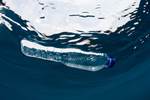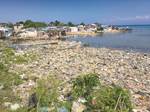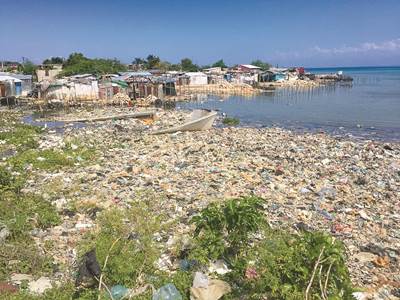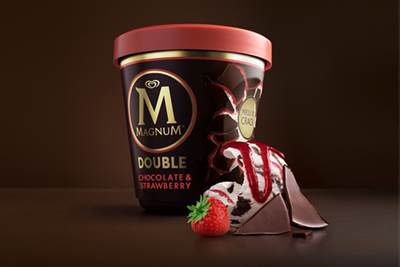Sabic and Microsoft Create Mouse Made from Ocean Plastic
The final product contains 20% recycled ocean plastic by weight in its external casing or “shell.”
Sabic and Microsoft have collaborated to create Microsoft’s first consumer electronic product. The Microsoft Ocean Plastic Mouse features an exterior shell containing 20% recycled ocean plastic.
Ocean plastic is defined as plastic that has been certified by a third party as recovered from any ocean or ocean-feeding waterways or where it washed ashore from these locations. Ocean plastic differs from ocean-bound plastic in that ocean-bound plastic is recovered from ocean-feeding waterways, shorelines, and inland areas within a 30 mile radius of the ocean. The two recycled products play complementary roles in helping address the issue of ocean plastic waste.
Mahari Tjahjadi, global director of electrical & electronics for Sabic, said Microsoft is a long-term customer. In 2019, he visited the company in Redmond, Wash., where they had expressed strong interest in incorporating recycled material in its products but the application was not yet chosen. A year later, Microsoft asked for ocean plastic in keyboard and mouse applications. The objective was to create a plastic resin made from at least 10% recycled ocean plastic as part of its commitment to achieve zero waste by 2030.
“The original thought was to target the keyboard but it quickly become apparent that this would be very complicated with all the various components,” Tjahjadi said. “The mouse became a nice option. Not only was it a much simpler application, but the mouse is small enough to carry with you and there is more of a personal connection to your mouse.”
The Microsoft design team collaborated with technologists at Sabic to provide feedback on prototypes made with the new resin. This effort resulted in several rounds of reformulation prior to arriving at a final version that exceeded Microsoft’s initial 10% goal. The final product contains 20% recycled ocean plastic by weight in its external casing or “shell.”
Sabic is providing a new Xenoy resin for Microsoft product use that is comprised of 20% ocean plastic, as part of Sabic’s Trucircle portfolio and services. Sabic will produce the new material in Asia at its Nansha compounding site in Mainland China.
This new Xenoy resin with recycled ocean plastic can help reduce plastic waste in the ocean. For example, based on a resin grade comprised of 20% recycled content, for every 1kT of product containing recycled ocean-plastic Xenoy PC/PET compound, an equivalent of 24 million single-use 0.5 liter PET water bottles is removed from the ocean, ocean-feeding waterways, or ocean-adjacent shores.
“We are proud that we can find technical solutions where we can mechanically recycle up to 20% ocean plastic without compromising application functionality and physical properties,” Tjahjadi said. “I do foresee the opportunity to include even a higher percentage in the future, but this would require further studies.”
This project has also provided a blueprint to demonstrate to the broader industry sector that recycling and reusing valuable plastic resins that have been recovered from the ocean, ocean-feeding waterways or where they have been washed ashore from these locations, is achievable when value chain partners use their knowledge and expertise and work together.
“There has been a change in mindset among consumers," Tjahjadi said. “Many years ago, a recycled product was thought of as cheap and lower quality. Now, with advancement of technologies, we can use recycled materials without compromising CTQs. Consumers are aware of such breakthrough/technical advancements, and want to purchase these products that are made with recycled material and are willing to pay a little more for them.”
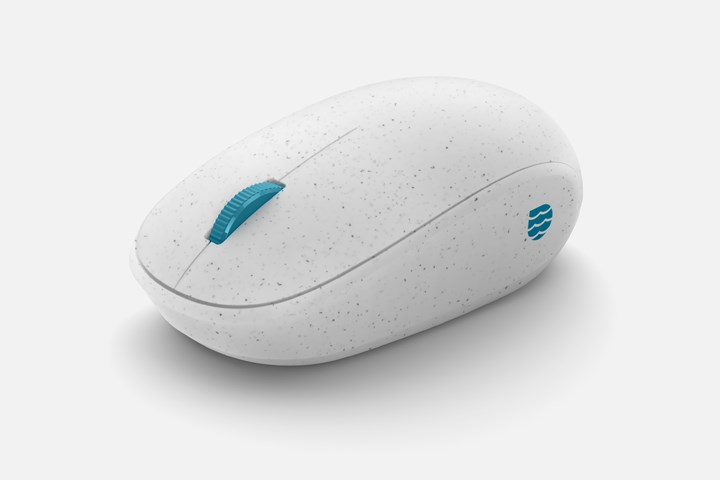
The Microsoft Ocean Plastic Mouse features an exterior shell containing 20% recycled ocean plastic.
Related Content
Honda Now Exploring UBQ’s Biobased Material Made from Unsorted Household Waste
UBQ is aiming to expand its reach for more sustainable automotive parts as well as non-automotive applications.
Read MoreAutomotive Awards Highlight ‘Firsts,’ Emerging Technologies
Annual SPE event recognizes sustainability as a major theme.
Read MoreFast, Simple QC Method Directly Quantifies Recycled Content in Plastics
Novel fluorescence-based spin-out technology provides a rapid and reliable method to measure and certify recycled content in a wide range of plastics.
Read MoreCompatibilizers Aid Recycling & Upcycling of Mixed Resins
Compatibilizers are proving their worth in boosting critical properties such as impact/stiffness balance of PCR and PIR blends of polyolefins and other plastics.
Read MoreRead Next
‘First’ Recycled Ocean Bound Plastic Portfolio Launched
SABIC appears to be in the forefront of introducing recycled materials from ocean bound plastic.
Read MoreTrash as Value: Turning Ocean Waste Into Viable Products
So-called “ocean plastics” is a global problem, but a wide range of companies across the entire supply chain have put in the time, money and R&D efforts necessary to make capturing and converting the material into a sustainable business. But demand must follow.
Read MoreChemical Recycling Poised to Take Off
Investments in chemical-recycling facilities abound as the industry moves closer to the Circular Economy model, accompanied by plenty of new rollouts of packaging made from chemical recycling.
Read More

